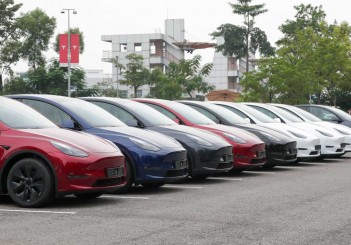The moniker stands for one of the worst viruses the world has ever experienced, but before then it was a Mexican brand of beer and a fairly ordinary saloon from Nippon.
The Corona was once one of the best-selling cars from automotive giant Toyota and at the vanguard of exports from the Far East which swamped the European market, as Toyota press spokesman Thomas Schalberger recalls. Today it is a daily driver classic although good examples are elusive and not cheap to buy.
The Corona story began in 1957 when the four-door car named after the Spanish world for "crown" was slotted into the Toyota line-up below the actual Crown model – the range-topping flagship from the Japanese maker.
The first generation of the mid-range Corona was designed for domestic consumption and it quickly took up cudgels against the popular Nissan Bluebird. The Corona arrived in Germany in 1971 along with the Corolla and Celica.

In 1973, the Japanese were proud of a title story in a German car magazine which tested the Corona alongside an Opel Rekord before pronouncing it the top car in its range. "When are the Japanese going to overtake the Gemans?” the gazette asked prophetically. The Corona was a hit in the United States too and in 1969 it was voted imported car of the year.
Figures show just how well the Japanese car went down with buyers.
For many years the Corona was the most successful model on the Japanese market and by 1971 overall production had reached three million units. The car topped the company’s sales chart for years. It was only in the 1980s that the Corona began to lose its lustre and in 1996 the model was dropped after 40 years and 10 million cars made.
In Germany and many other European countries the Corona vanished from the showrooms even earlier. Sales in the land that invented the motor car were modest and in 1973 the Corona was replaced in Germany by the Carina which means the car is a rare sight on today’s roads.
Taking a seat at the wheel of a Mark II example from 1973 is a trip down memory lane to an era when streamlined TransEurope Express trains criss-crossed the continent and sushi bars were unheard of in European cities.
The Corona Mark II was a modest-looking car although its twin headlight arrangement at the front and contemporary "coke bottle" styling with sweeping curves set it apart from the competition.
The dashboard, with its easy-to-read triple dials, was progressive at the time but the steering wheel was too large by today's standards and the lanky gearstick seemed to be constantly out of reach.
With hindsight, the Corona emblem was a sign of darker things to come. It depicts a large C with a stylised star as background which bears an uneasy resemblance to the Covid-19 virus animations everyone is used to seeing these days on the internet and television.

The drivetrain is unassuming, with a four-cylinder engine turning out a workaday 89hp. Opting for the six-cylinder engine meant stepping up a notch in luxury and style. The quality was good too at a time when many European cars were let down by shoddy build and lacklustre equipment. Reliability was a byword for the Corona which makes it attractive proposition as a cherished car.
Other Toyota models may offer more but the Corona has a certain fascination – indeed driving one for longer is an infectious experience.
Without stretching the virus comparisons too far, it would be fair to say that treating a Corona properly is as fraught as dealing with the health crisis and arduous at the same time. Used Coronas are as rare as the anti-Covid vaccine for which the world is waiting for with bated breath.
Anyone who tracks down a half-decent Corona will probably have to pay a five-figure sum for the pleasure of owning one and travel to Britain to Portugal to pick it up.
Standard wear parts such as clutches, brake pads, or a new set of brake drums for the Mark II are happily easy to find and reasonably priced. Model-specific part are more challenging to locate.
Items such as window regulators and tail-lamp lenses are virtually unobtainable. Fortunately, there is a dedicated community of vintage Toyota enthusiasts out there to help with tracking stuff down.
For Toyota fans who need a quick fix, a trip to the company’s heritage collection in Cologne is a good idea. It opens to enthusiasts once a month – but only when the health crisis permits. Germany is currently in semi-lockdown.










